|
|
Short description
|
|
|
The study of the
irradiation-induced defect formation in various metals and metal alloys is
of interest in order to understand the degradation of the physical properties
of the materials used in pressure vessels in nuclear power plants as well
as in metal coatings for fusion-based alternative energy sources [1].
The theoretical description of radiation effects in materials requires
modeling and simulation of processes that occur over widely disparate
length and time scales [2,3]. Since most damage produced in materials
during ion irradiation derives from a complex process occurring in
collision cascades, much research has been devoted to studying these events
[4].
The positions and kinetic energies of each
particle of the system were displayed using the open source software RasMol
[5], which allows 3D visualization from various angles. It has the
advantage that it can easily display large systems, the color coding (or
the grayscale) indicating qualitatively, the kinetic energy of each
particle. The disadvantage, however is that it does not allow for
different transparencies of various particles to better visualize
particular parts of the systems (for instance the hot regions with high
energy particles displaced from their equilibrium positions).
To obtain a more flexible visualization software
than RasMol, we implemented our own virtual
reality based software, ScientView,
based on the AReVi API developed by CERV [6,7]. AReVi is an open C++ and OpenGL based source, and is adaptive to very different
configurations, starting from desktop systems and ending with 3D
stereoscopic immersion systems. ScientView allows the immersion
within the simulated virtual environment leading to an interactive 3D
visualisation of the experiment. Like RasMol, it allows various visualization perspectives,
from different angles, but it also permits the navigation through the
simulated environment for instance following the impact particle (or any
other particle of the system). Another special feature is the
capability to modify the level of transparency of various particles which
allows a clearer picture of the shock wave and the molten regions.
Moreover, other options are related to sequences of images, the user
being able to switch between no animation, step by step and continuous
interpolation-based animation modes. The software also allows for
reverse display of the time evolution as well as for choosing and
visualising particles in any section plane parallel to the walls of the
simulating cell.
We have considered the virtual environment as a
space of human experience, and we have proposed in [8] a reactive
agent-based model that permits the user’s setting in the situation, the perception of space by its user, as
well as the user’s evolution in
this space. In other words, everything inside the virtual space is an
agent, able to perceive, decide, and react based on its profile, internal
structure, and tasks, to the environment evolution, so to the user actions
also; as section plane movement and transparency filter selection. The
material cells’ behaviour consists in following the given path and
evolving according to the given temperature and position information set.
|
|

|
|
|
|
top
|
|
|
|
|
|
|
|
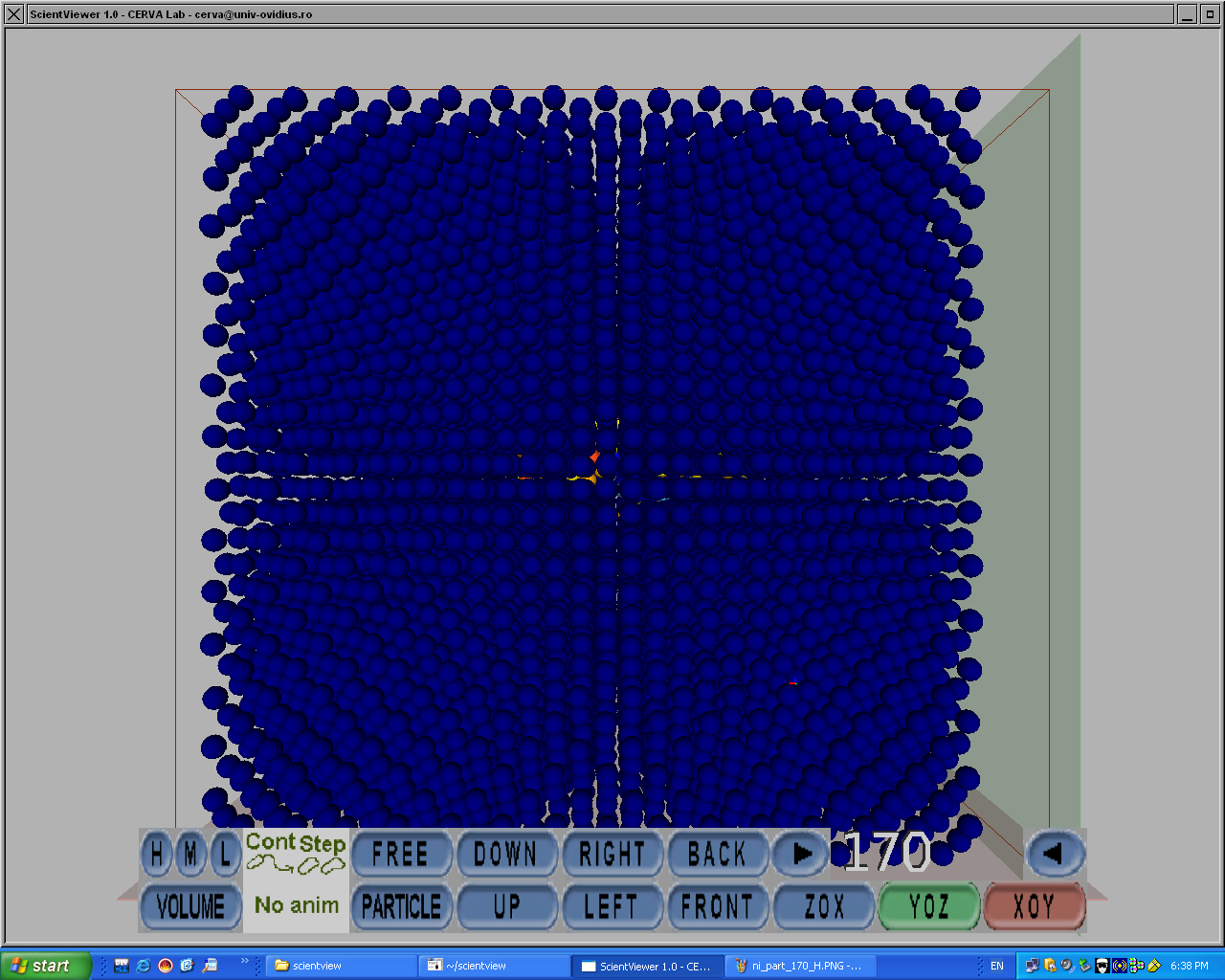 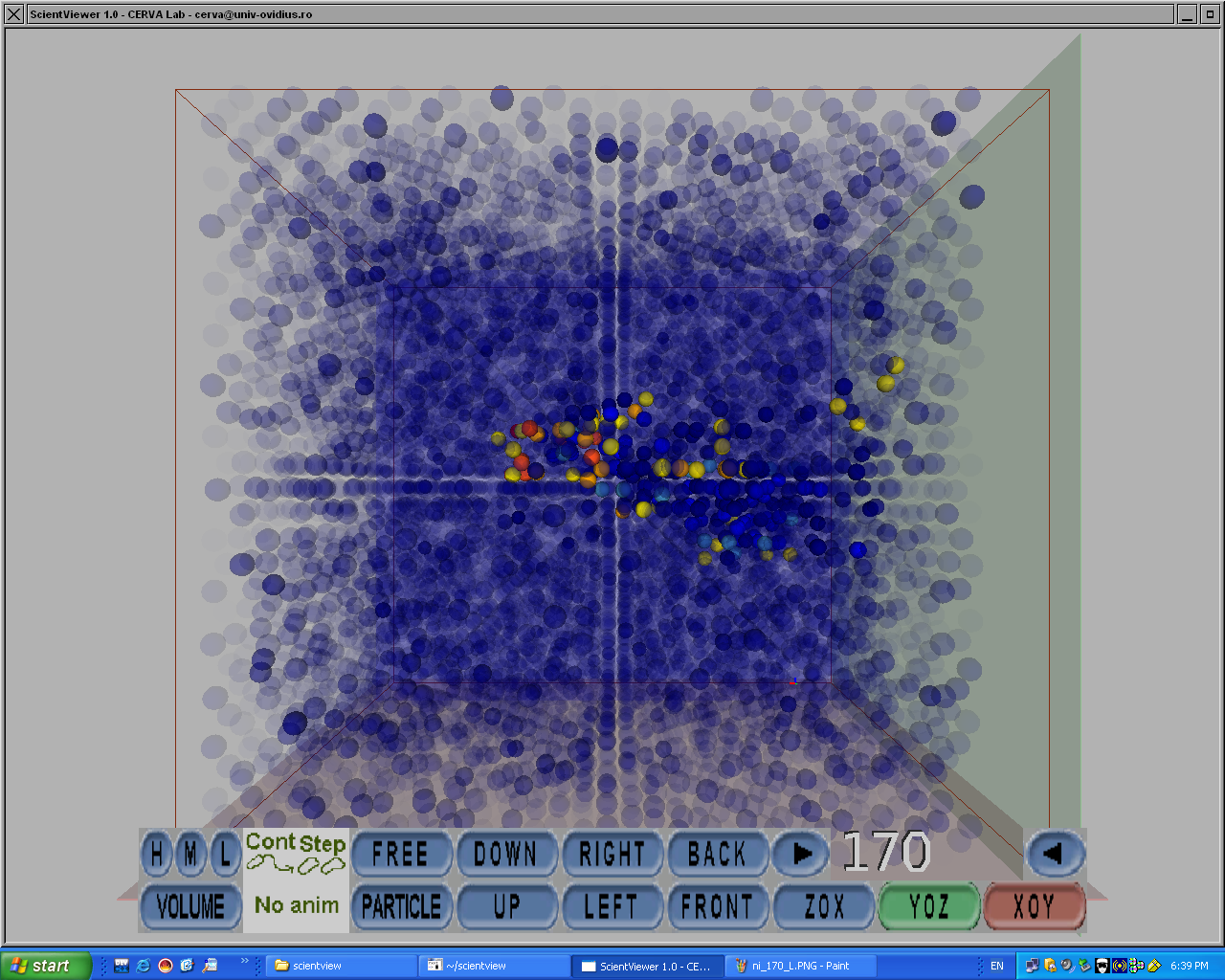 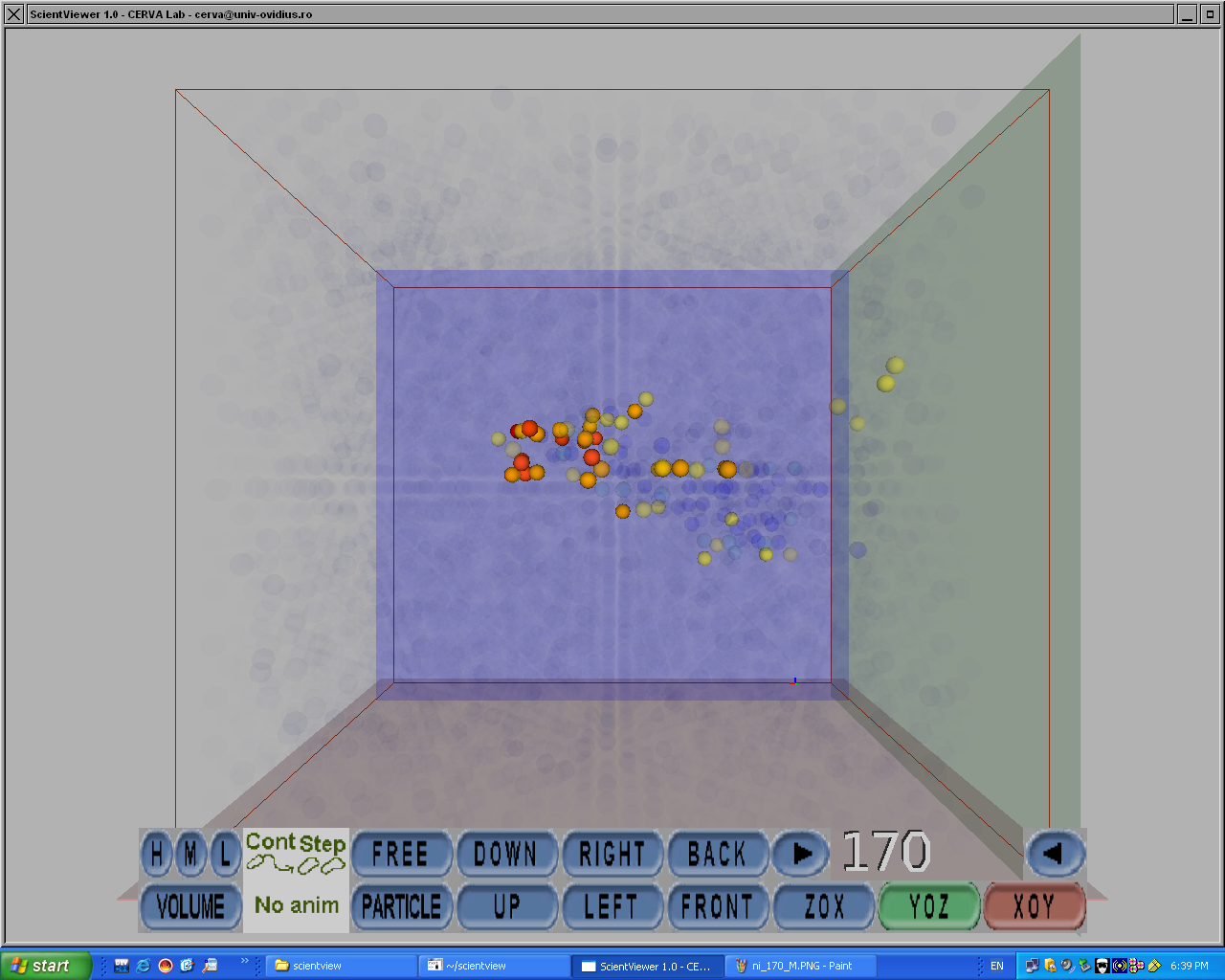
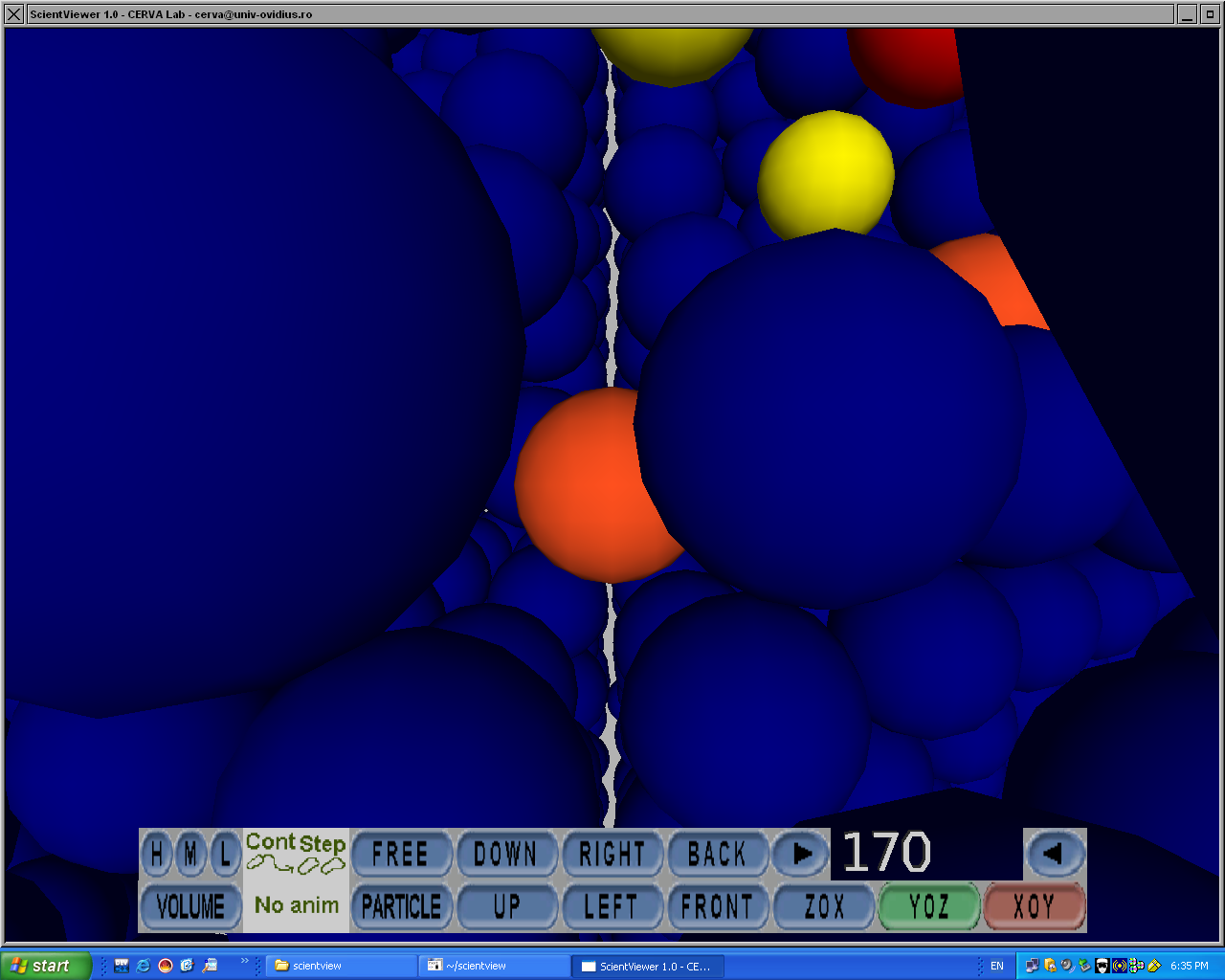 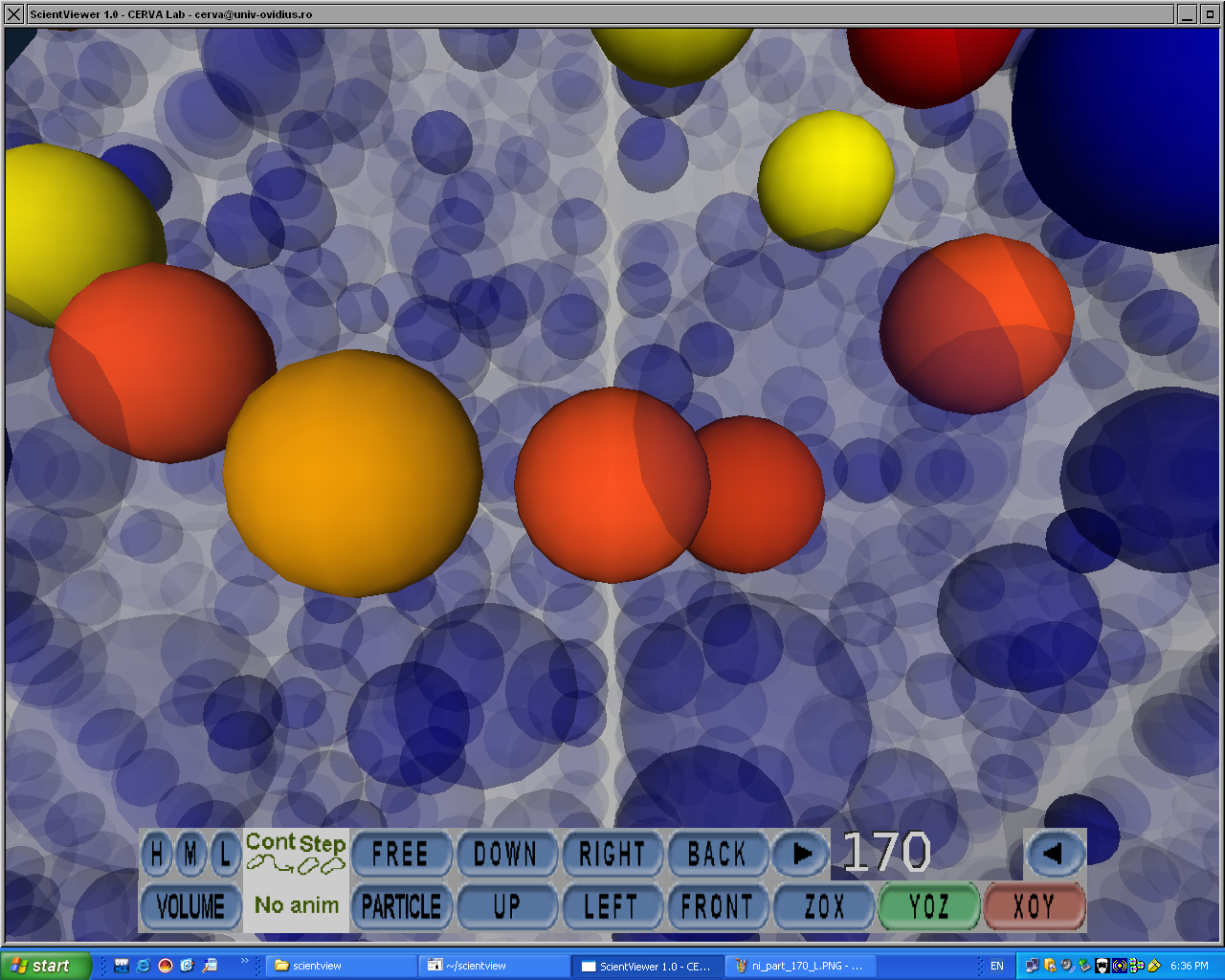 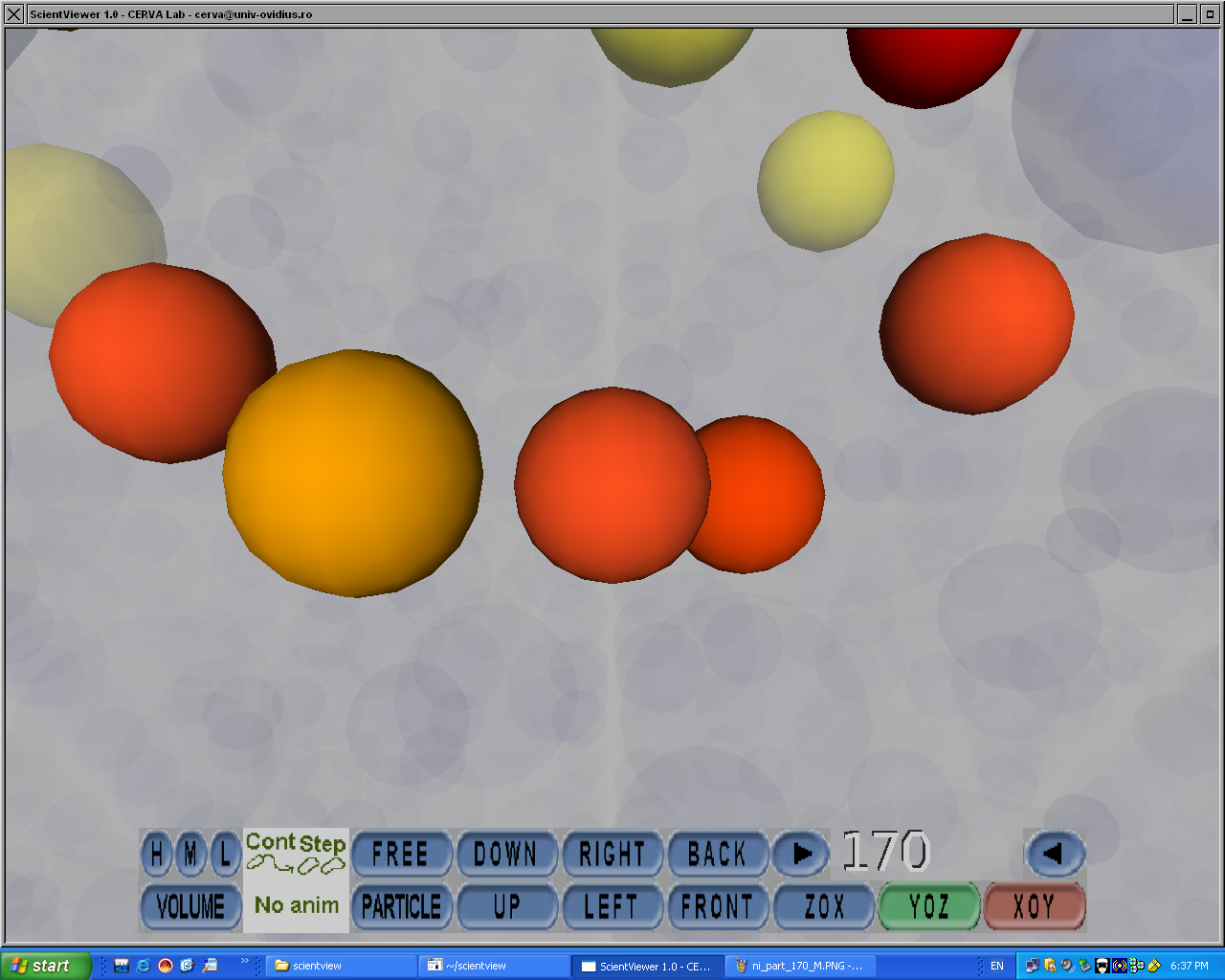
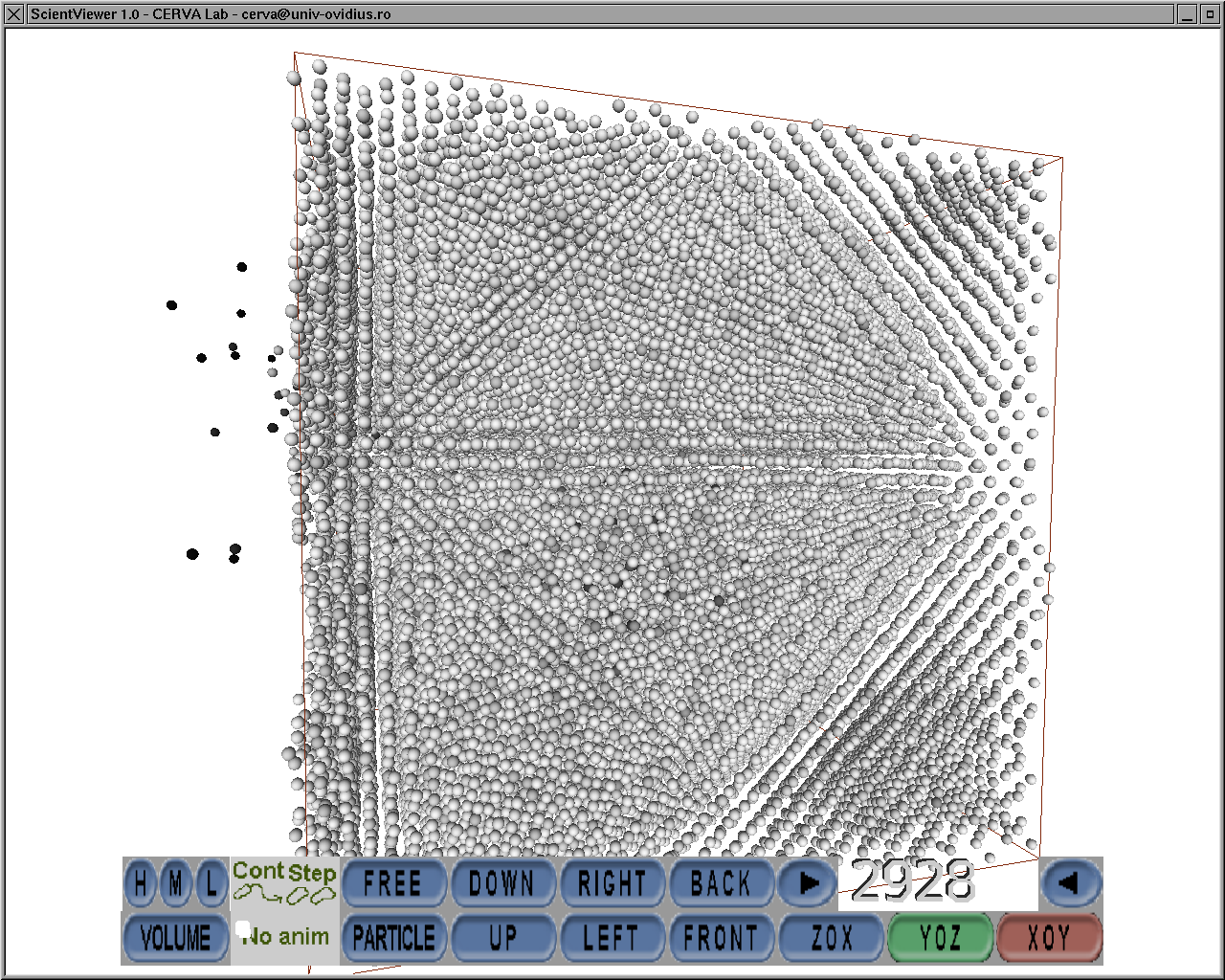 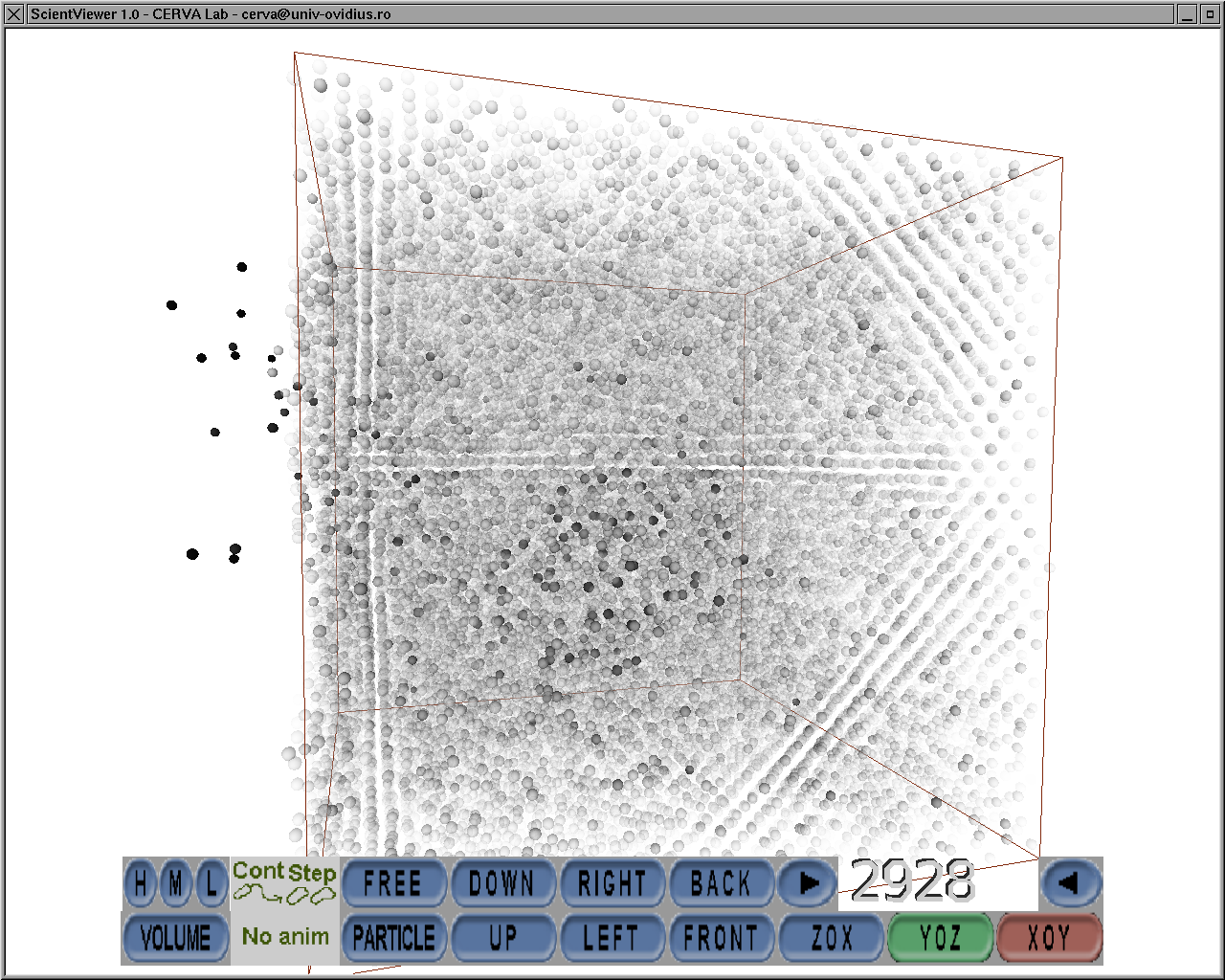 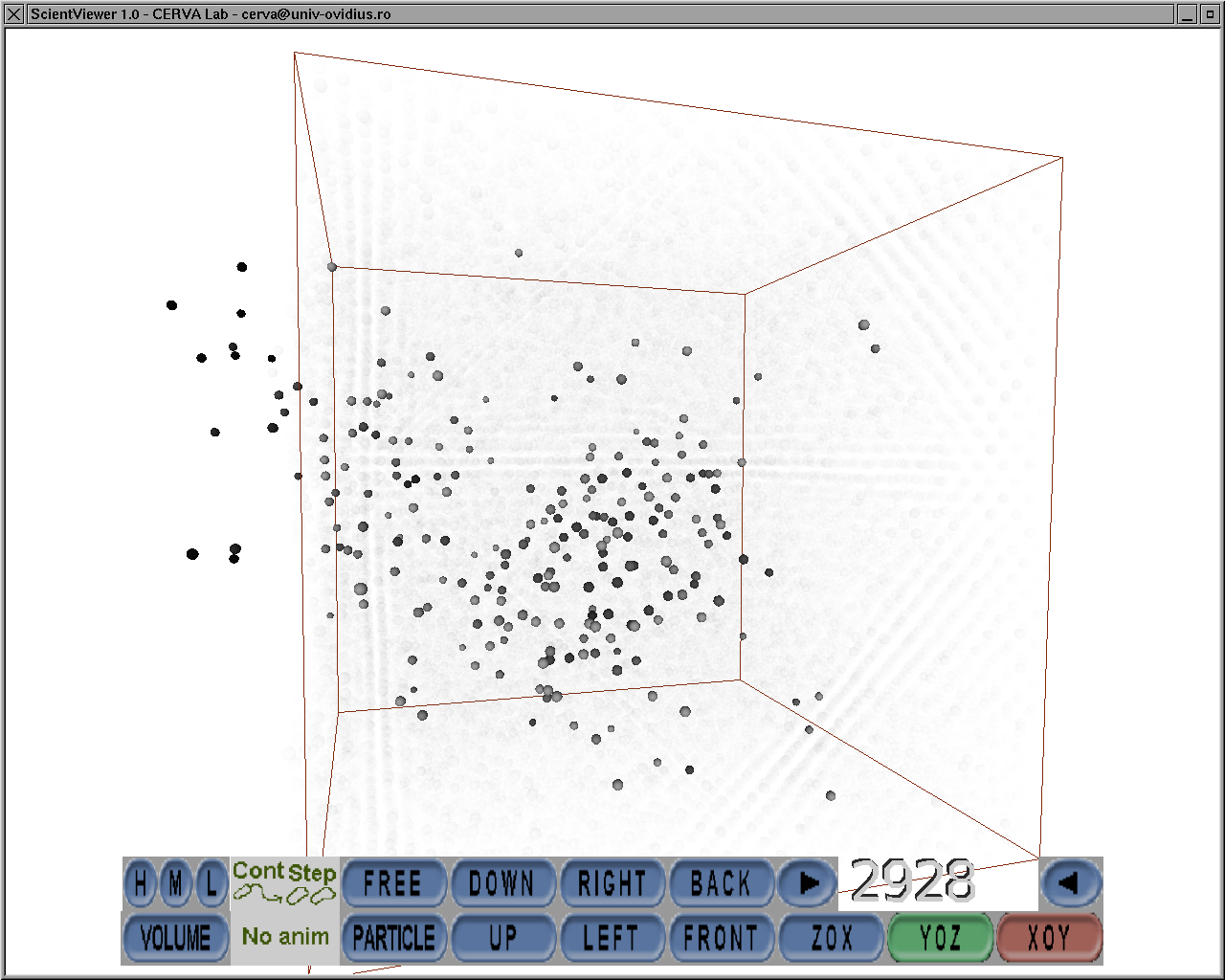
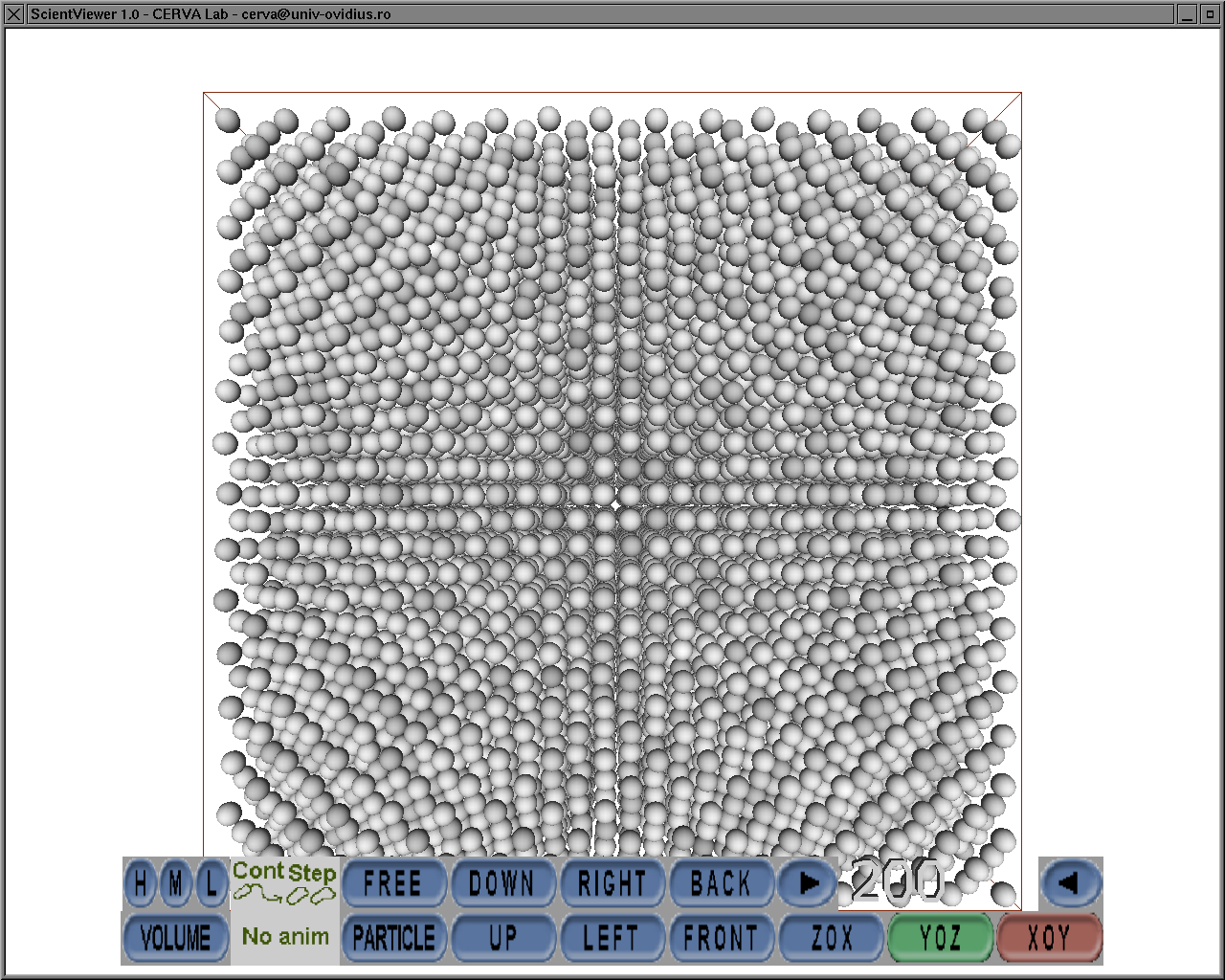 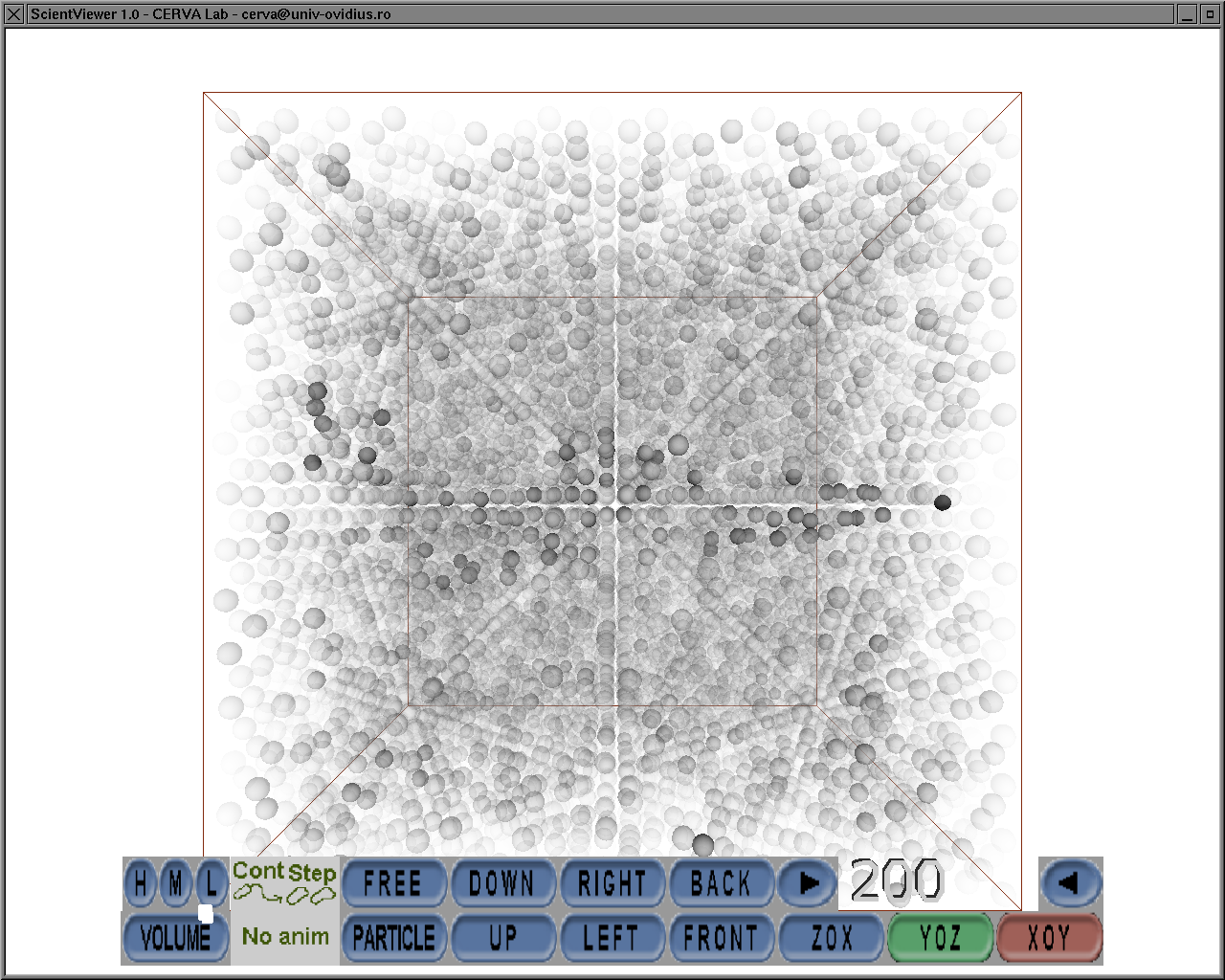 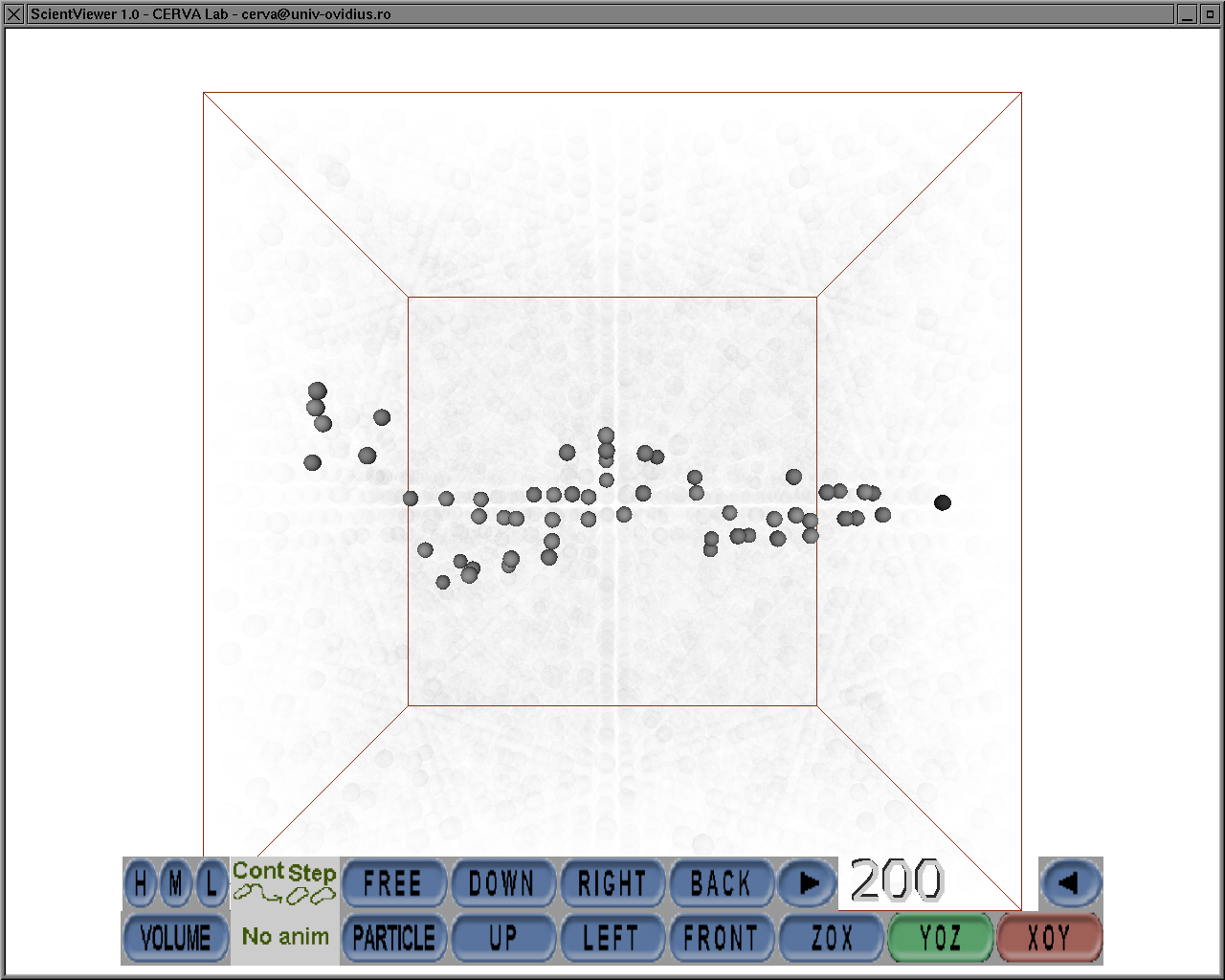
|
|
|
|
|
|
|

|
|
|
|
top
|
|
|
|
|
|
|
|
This work was supported in part by the Romanian Ministry
of Education and Research through the National University Research Council,
grant CNCSIS A678/2006, and the National Authority for Scientific Research,
grant INFOSOC 131/20.08.2004. The authors are thankful to the
research teams within the INTUITION project
(FP6-IST-NMP-1-507248-2) and from CERV, Brest,
France, as
well as to the CERVA team from Ovidius University of Constanţa,
Romania, for their constant support.
|
|
|
|
|
|
|

|
|
|
References
|
top
|
|
|
|
|
|
|
|
[1] K.
Nordlund, M. Ghaly, R.S. Averback, M. Caturla, T. Diaz de la Rubia, and J.
Tarus, Phys. Rev. B, 57, 7556 (1998).
[2] R. S. Averback and T. Diaz de la Rubia, in Solid State Physics 51 (eds F. Spaepen, et al.) 281–402 (Academic, New
York, 1998).
[3] J. Tarus and K. Nordlund, Nucl. Instr.
Meth. Phys. Res. B 212,
281 (2003).
[4] K. Nordlund, J. Keinonen, M. Ghaly& R.
S. Averback, Nature 49,
398 (1999).
[5] RasMol, version 2.7.3, Herbert J. Bernstein,
Bellport, NY, USA, http://www.openrasmol.org/.
[6] P. Reignier, F. Harrouet, S. Morvan, J. Tisseau,
T. Duval, AReVi: A Virtual
Reality Multiagent Platform, Lectures Notes in Computer
Science, 1434 (1998) p.229-240.
[7] AReVi API software developed by the European Virtual
Reality Center,
CERV, Brest, France. http://www.cerv.fr/fr/activites/AReVi.php or http://sourceforge.net/projects/arevi/.
[8] Popovici, D.M. (2004): Modeling the space in virtual universes,
PhD Thesis: Politehnica University of Bucharest.
|
|
|
|
|
|
|